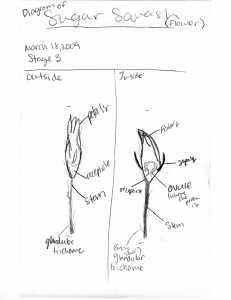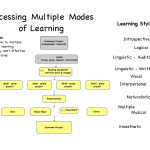… the part of the brain that processes movement is the same part of the brain that processes learning.
— Jensen (2005): Movement and Learning in Teaching with the Brain in Mind.
I’m setting up a new classroom this year. How it’s arranged is very important to me. Montessori classrooms are designed for open movement and having different things going on in different places at the same time. Unlike last year, I won’t have to manage the entire middle school in the same room for the entire day. Instead, middle and high-school students will come in for two-hour periods for math and science.
Two hours is a long time for anyone, so I don’t expect them to be able to sit still for the entire period. In fact, just like in last year’s middle school classroom, I intend that the class devolve into smaller groups for most of that time. Students will need to be able to move around freely and associate freely, so long as they respect each others ability to work. I’m trying to arrange the room to facilitate that.
So how to arrange the furniture?
I need open spaces for students to walk and move. Eric Jensen has an entire chapter of Teaching with the Brain in Mind dedicated to how important movement is to learning. His focus is primarily on the need to save time for recesses and PE in increasingly regimented school days, but he also talks about integrating movement into everyday learning: energizers to wake kids up; stretching for more oxygen; and so on. I certainly know that I do a lot of pacing when I’m trying to think.
David Walsh also sees movement in the classroom as particularly important for boys.
Adolescent boys can have five to seven surges of testosterone every day. … And because testosterone is geared towards quick release, adolescent boys are prone to follow any impulse that might release stress. [p. 62]
…
Some experts think that making students sit still at a desk all day isn’t good for either sex, but girls are better able to tolerate it. Boys are more likely to get frustrated by school and loose interest. [p. 100]
— Walsh (2004): Why Do They Act That Way.
So no rows of desks. Instead, I’ve tried to make different work areas.
- There’s one big area with a set of tables along three sides of a rectangle facing the whiteboard; students can be inside or outside of the rectangle depending on their needs.
- Another area is centered around the couch, which may seem highly desirable, but I’ll be curious to see how they use it to work.
- Toward the back of the room, there’s a solitary, larger-than-normal desk for a larger group that need space from the big set of tables.
- I also have a smaller table near the window, that I envision would appeal to smaller, quieter groups, or even individuals sharing the same table.
- And, finally, there is a bank of individual work spaces along the back wall.
That’s the plan, anyway. Classes have not started yet, so we’ll see how it holds up when it meets the enemy students. I am always happy to let them rearrange things, but most often they don’t seem to want to spend the time and effort.





